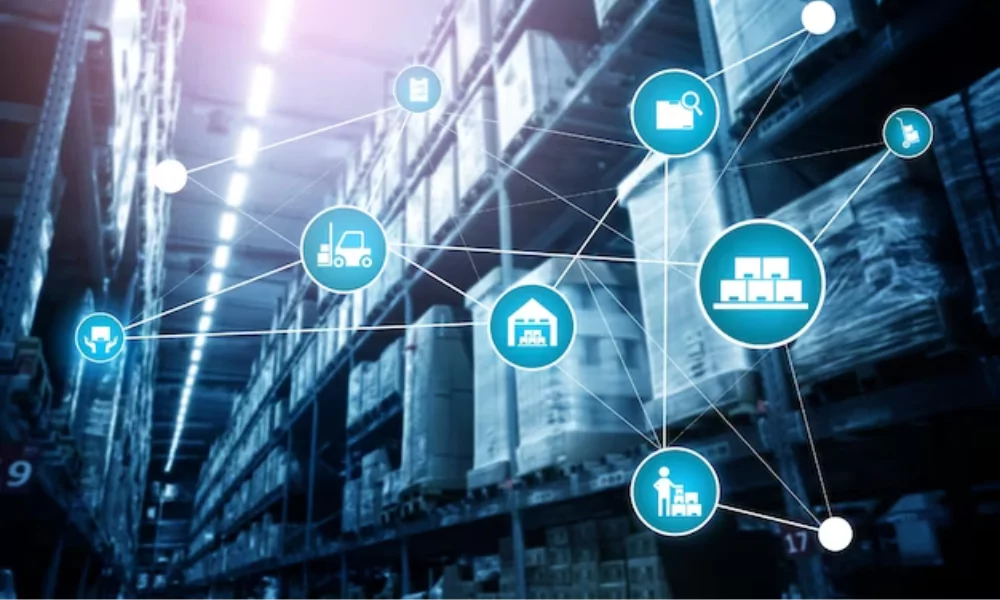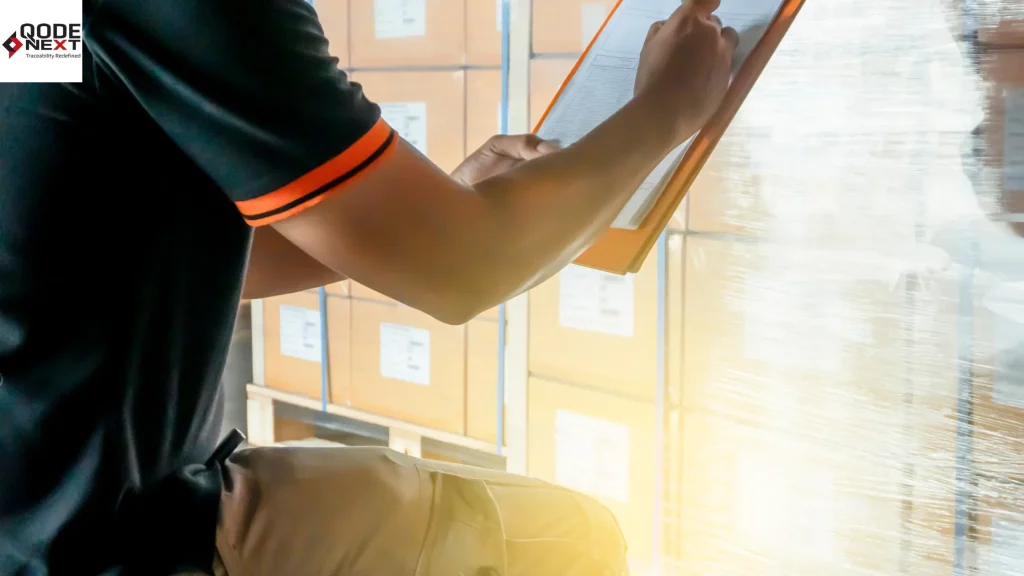
Supply chains are often underestimated in terms of their fragility.
Bottlenecks in your supply chain can cause big problems for your business. Some common reasons for these issues include not storing stock properly, having inefficient ways of working, not having clear rules for how much inventory you need, not having enough resources or people to do the job well, not being clear about what’s happening in your supply chain, and not matching what you’re selling with what people want to buy.
Successfully delivering an order to a customer involves careful planning, continuous collaboration among various stakeholders, and impeccable timing. Thus, even a minor disruption in any part of the supply chain can lead to significant challenges.
This blog explores the root causes of supply chain problems and ways in which you can overcome them.
Let’s dive straight away!
Bottleneck Supply Chain: Meaning
Before we explore how to solve supply chain problems it is crucial to understand a bottleneck situation meaning.
A bottleneck in business refers to any point where things get stuck, causing delays and raising costs. Fixing these bottlenecks can improve how well you can see what’s happening in your supply chain, making it easier for decision-makers to understand what’s going on.
Certain bottlenecks are minor enough that the supply chain can still function, albeit not as smoothly. For instance, if a conveyor belt in a warehouse stops working, workers can manually move items to where they need to go, but this will definitely slow things down.
However, some bottlenecks are big enough that they completely stop the supply chain, and customers end up not receiving their orders.
For example, during the pandemic, we saw bottlenecks in transporting goods, like shipping containers, and a lack of workers.
What causes these bottlenecks and how you can overcome them are explained in detail in the rest of the blog.
Bottleneck Supply Chain: Causes
When a bottleneck supply chain happens, it’s not just a one-time problem like traffic or bad weather causing a delay. Instead, they happen over and over again, causing frequent impediments. The key to fixing these bottlenecks is figuring out why they’re happening in the first place.
The causes include
- Shortages of workers
- Problems with shipping companies
- Worldwide emergencies like wars or diseases
- Calamities like earthquakes or hurricanes
- Sudden increases in how much people want to buy
- Limits on trade
- Factories shutting down
But sometimes, even small mistakes can cause big problems. Some common errors that lead to bottlenecks and can be avoided are:
- Not predicting demand accurately
- Communication problems with suppliers, sellers, or others involved
- Not having backup plans
- Troubles with managing inventory
5 Tips For Dealing With Supply Chain Bottlenecks
Spotting and handling these supply chain problems needs knowledge of the industry and a lot of time to understand and put better processes in place. It can take you away from focusing on your main business activities, which can be tough.
Now that we know the bottleneck meaning and what causes them, let’s delve into bottleneck operations management.
Here are five main ways to deal with supply chain bottlenecks:
1. Recognize Your Bottlenecks
Every supply chain is different.
They can vary in how products move through them or the type of operations they involve. When problems come up, they need to be fixed differently. If there are bottlenecks that aren’t defined, they can cause unnecessary problems that waste time, effort, and money. So, managers in logistics and supply chains need to look at how they manage their supply chains and find any potential bottlenecks.
Smart supply chain professionals know that experienced third-party logistics providers have a lot of knowledge about helping businesses find potential bottlenecks. They can plan ahead, stop problems from happening, or find ways around them to keep the supply chain running smoothly.
Thanks to improvements in supply chain technology, it’s much easier to find out what’s causing problems and fix them quickly.
2. Read And Interpret The Data
In the past ten years, it’s become easier to get hold of supply chain data. Whether it’s tracking goods from where they’re made to when they’re delivered to your door, businesses that can quickly understand this data can save a lot of money and stay ahead of the competition.
There are lots of ways to find and deal with problems in manufacturing. But since every supply chain is different, the best way to spot possible problems is to look at your own history and data. Your business’s data should show you where there have been problems before, and maybe even some ideas for fixing them.
3. Outsource To Reliable And Experienced Partners
Successful management of the entire supply chain, from start to finish, needs skilled people, big networks of resources, good computer systems, and capable managers. Without these things, your supply chain might not work very well. One way to fix this is to work with a third-party logistics provider that you can trust and who knows what they’re doing.
4. Create A Comprehensive Plan
Reacting impulsively to bottleneck situations without a proper plan might solve immediate issues but could seriously harm your supply chain in the long run.
To ensure that every action taken has been carefully considered before putting it into action, it’s important to identify bottlenecks early on and thoroughly discuss all available options before deciding on one or more solutions.
Third-party logistics providers can be incredibly helpful in this process as they bring valuable experience and expertise that can assess both short and long-term impacts on your supply chain. Working with an experienced third-party logistics provider can help you develop a reliable and robust plan to effectively manage bottlenecks.
5. Develop A Transparent And Flexible Supply Chain
In simple terms, having a transparent supply chain means being able to track each new product at every step of its journey, from production to manufacturing, in real-time. It also means having instant access to all the data and information needed to make smart business decisions, along with proper documentation and up-to-date inventory and fulfillment records.
In recent years, there’s been a surge in companies offering supply chain technology, making it easier and cheaper to get hold of this valuable data.
Having this transparency means you can spot bottlenecks and figure out why they’re happening. If there’s a blockage in the flow of goods, it’s easy to see it in a transparent supply chain and make proactive decisions to fix it, rather than reacting to problems as they arise.
However, not all bottlenecks can be predicted in advance. Some pop up suddenly and need to be dealt with as they happen. A transparent and flexible supply chain makes it simple to quickly spot these bottlenecks and deal with them with minimal disruption.
FAQs: Resolve Your Supply Chain Bottlenecks
What is a bottleneck in a supply chain?
A bottleneck in a supply chain refers to a point where the flow of materials or information is restricted, causing delays and inefficiencies in the overall process.
How to identify bottlenecks in supply chain management?
Large bottlenecks are usually very evident, however, small bottlenecks are comparatively harder to detect. Take the issue into consideration and prepare a workflow diagram of your supply chain operations so that you can identify what is causing it.
What are the common causes of bottlenecks in a supply chain?
Common causes of bottlenecks in a supply chain include limited capacity at certain stages of production, inventory shortages, equipment breakdowns, transportation delays, and variability in demand or production.
Conclusion
In a supply chain, bottlenecks can slow down your operations, making you invest more time, effort, and attention to fix them.
Detecting and addressing these bottlenecks early on can enhance the flow and boost the efficiency of the entire supply chain. Creative third-party logistics providers are adept at pinpointing these bottlenecks and can offer management expertise and sophisticated planning strategies to prevent them from occurring.
If you’re seeking assistance with managing your supply chain and logistics, reach out to us, and let’s discuss how we can contribute to your company’s growth.







